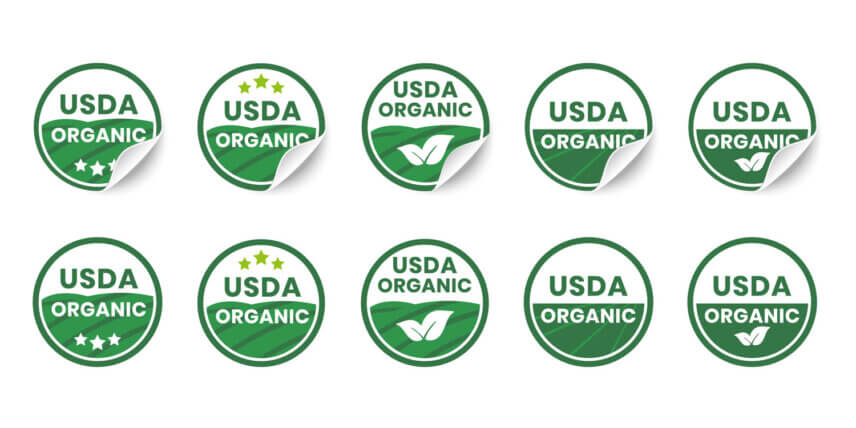 According to the USDA, “organic is a labeling term that indicates that the food or other agricultural product has been produced through approved methods that integrate cultural, biological and mechanical practices that foster cycling of resources, promote ecological balance, and conserve biodiversity.”
According to the USDA, “organic is a labeling term that indicates that the food or other agricultural product has been produced through approved methods that integrate cultural, biological and mechanical practices that foster cycling of resources, promote ecological balance, and conserve biodiversity.”
Below are five frequently asked questions about packaging organic products.
1. What is Organic Products Certification?
The organic certification process makes sure that food growers and handlers are following the strict laws and regulations established by the Organic Foods Production Act of 1990. Everyone, from producers to packagers and other handlers, must be certified to sell products labeled as “organic.”
Organic standards address many factors, including soil quality, animal raising, pest and weed control, and the use of input materials. The use of sewage, sludge, bioengineering (GMOs), ionizing radiation, and most synthetic pesticides and fertilizers is prohibited from organic production.
Organic standards also include regulations for processed products that require organic ingredients and prohibit the use of artificial preservatives, flavors, and dyes.
2. Does the Packaging Facility Require Organic Certification?
Products labeled as organic must be packaged in an inspected and certified organic facility. Independent facilities (not owned by the certificate holder) that take possession and further process, handle or package organic products must be certified organic and are responsible for following regulations that maintain the integrity of the food they deal with.
Products packaged in an uncertified facility may not be sold as organic and may only identify organic content on their ingredient panel.
3. What Materials Can Be Used for Packaging Organic Products?
Packaging for food must be compatible with the food product packed inside, and food standards and regulations must be met. Since organic products do not normally contain any chemicals, strict rules for packaging organic products state that they cannot be packaged in anything that contains or has been in contact with synthetic fungicides, fumigants, and preservatives.
4. What are the Labeling Requirements for Organic Products?
In order for processed food to be labeled organic, 95% of its ingredients must be produced organically. The weight of the final product determines this percentage. If a product has more than 50% organic ingredients, it can label this on the front of the product. If it has less than 50% organic ingredients, organic labeling can be displayed on the ingredient list.
Product labels must state the name of the certifying agent on the information panel. In addition, food, alcohol, textiles, cosmetics, and personal care products may be labeled organic if the finished product is certified organic and in full compliance with the USDA organic regulations.
5. Can Imported Foods be Certified Organic?
In order for foreign organic products to be sold as organic in the United States, the imported products must be certified according to the USDA organic regulations or certified according to an authorized international standard. For example, products certified organic by Canada, European Union, and Japan can be sold as organic in the US.
